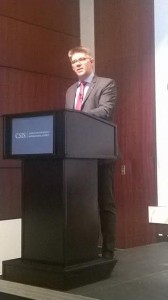By Donna Wells.
Iceland’s Foreign Minister, Gunnar Bragi Sveinsson, visited the United States this week. Allow us to examine Iceland’s economy in terms of both its overall health as well as its bilateral trading partners.
Although Iceland’s population has grown since 2007, its economy has contracted. The United Kingdom has experienced a similar contraction, although of a smaller magnitude. Both economies have grown overall since 2000. By contrast, Norway, Sweden, Finland, and the Netherlands have experienced economic growth since 2007.
Since 2000, Iceland’s economy expanded 91% to $17billion in 2014. The United Kingdom’s economy expanded 90% to $2.9trillion in 2014. Since 2007, Iceland’s economy has contracted by 20% whereas the United Kingdom’s economy has contracted by 1%. Norway, Sweden, Finland, & the Netherlands grew by 25%, 17%, 6%, and 4% since 2007.
Populations in each of these nations have grown since both 2000 and 2007. Iceland’s population grew 5.1% from 2007 to 327,589 in 2014. The United Kingdom’s population grew 5.2% to 65million.
Bilateral Trade with Iceland exists is two tiers. The United Kingdom and the United States are major trading partners. Total Trade between Iceland and the United Kingdom in 2014 was $890million; Total Trade between Iceland and the United States was $790million.
A second tier By: Donna Wellesof trading partners exists in the People’s Republic of China, France, and the Russian Federation. China traded with Iceland $439million in 2014, France traded $385million in 2014, and Russia traded $249million in 2014. In 2000, China traded $59million, France traded $184million, and Russia traded $54million.



